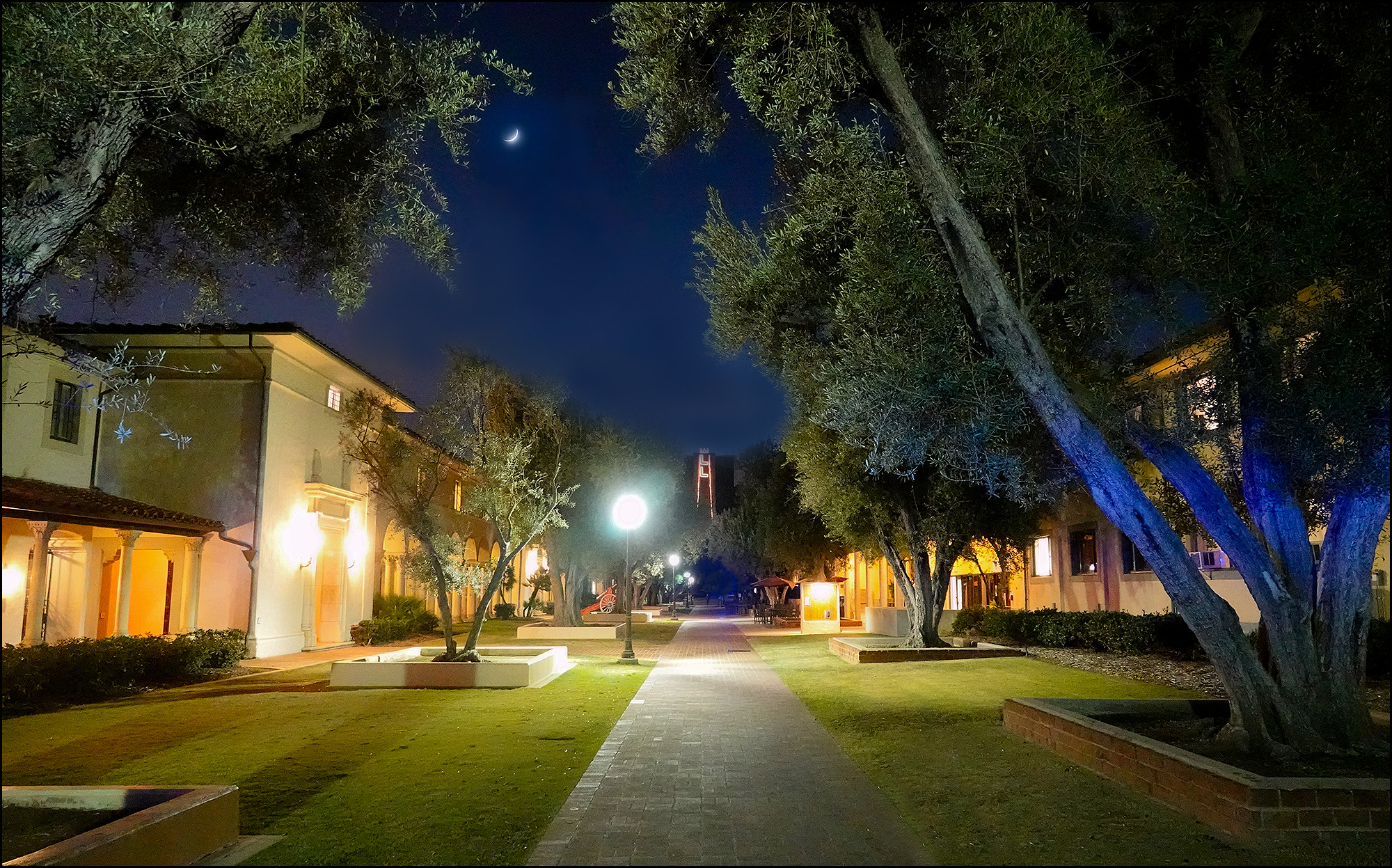When I went up to the LA Arboretum last month, I had to leave the park at 5 o’clock and then come back later to get into the evening show. Since I needed to test out my monopod anyway, so I decided to kill some time by heading over to Caltech and taking a look at my old tromping grounds.
This is a picture of the Olive Walk, so named for obvious reasons. Student housing lines both sides. The “old” houses (built in 1931) are on the left: Ricketts in the foreground and Fleming farther down, just past the red Fleming cannon. Blacker is behind Ricketts and Dabney is behind Fleming. On the right are the “new” houses (built in 1960): Lloyd on the right and Page farther down. Ruddock, my house while I was there, is behind the camera adjoining Lloyd.
The scare quotes around “new” and “old” are there because several even newer student residences have been built in the 40 years since I left. I’m not really sure how they’re all referred to these days.
In the far background, dead center, is the Millikan Library. The letters LL are hung from the top in lights, and I have no idea what they mean. If anyone can enlighten me, I’d appreciate it.
UPDATE: The letters stand for Lloyd House. All I had to do was go to Wikipedia: “Every year since 1994, Lloydies have climbed onto the top of Millikan Library to construct the Lloyd Christmas Tree, a monumental structure of numerous Christmas lights strung together to resemble a 10-story Christmas tree topped with a 12-feet-tall “L.” During the big wind storm of 2013, the L broke apart into pieces, so the Lloydies rebuilt the “L”, but replaced it instead with a double “L” that is now 16-feet-tall.”


















